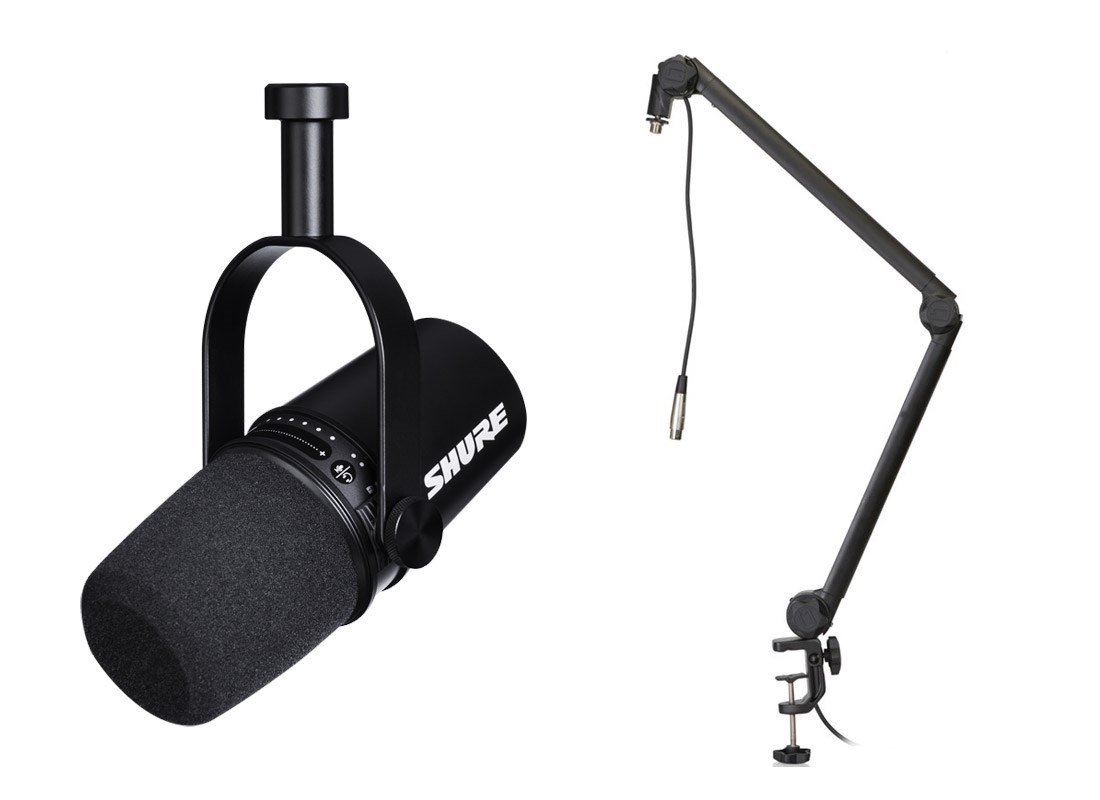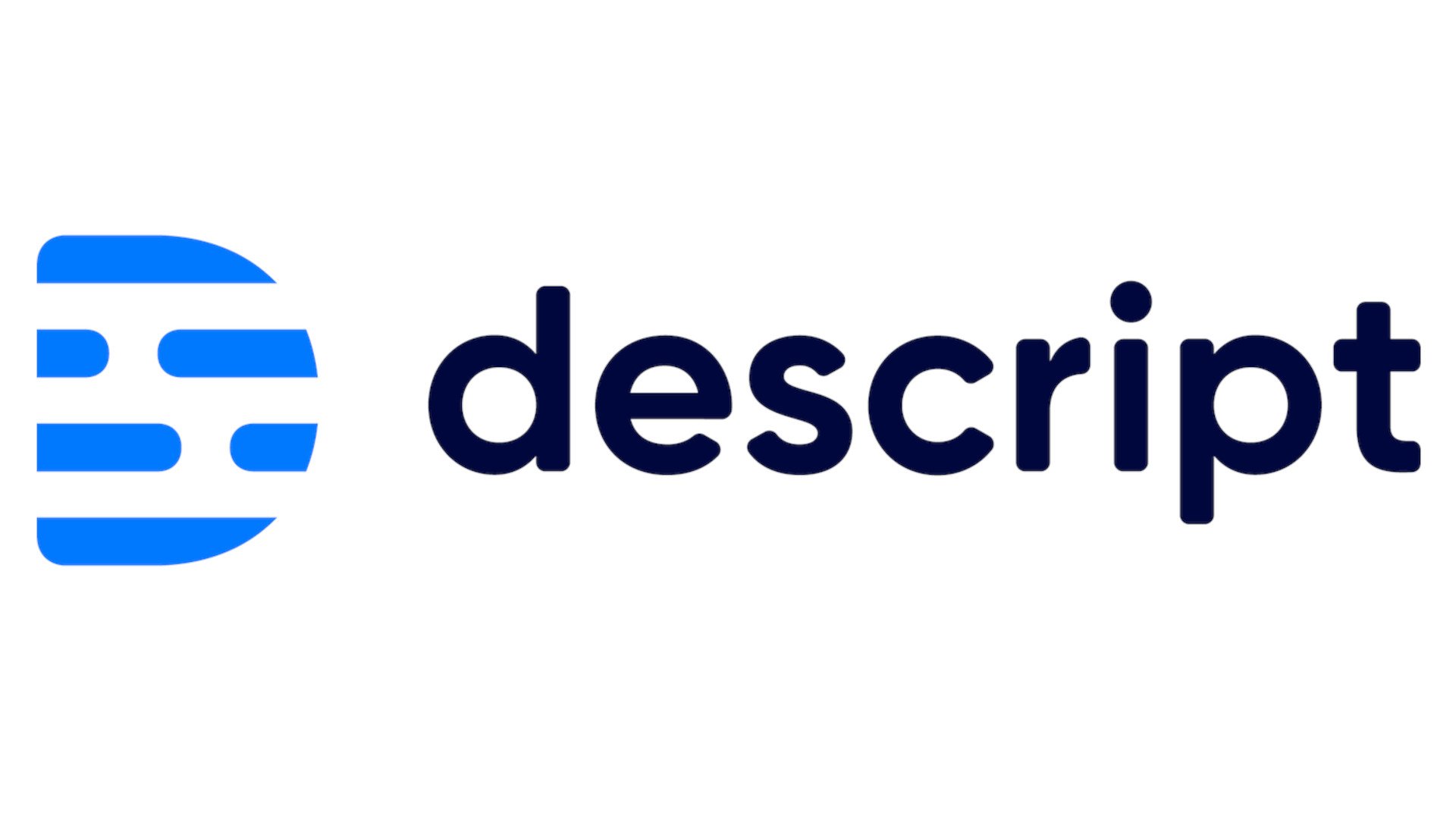(Updated August 4, 2025). Which podcast microphone should you buy? Watch Emily’s review below of two of the most popular and beloved podcast mics: Shure SM7B vs Shure MV7.
Click to jump to Part 2 for two best tools / apps to record and edit your podcast.
Part 1: The Two Best Podcast Mics
Mic 1: Shure SM7B (the gold standard, the Thriller mic)
Price point: $439-$549 (as of August 2025 on Amazon)
XLR microphone
Recommended: Option A) Shure SM7dB Dynamic Vocal Microphone w/Built-in Preamp: This newer version has a built-in pre-amp, *meaning you do not need a Cloudlifter. WE LIKE THIS SIMPLER SETUP BETTER than Option B.
Price: $549 before additional gear.About the built-in preamp: Providing up to plus 28 dB of low-noise, flat, transparent gain, the onboard preamp preserves the mic’s frequency response for a clean, classic sound. All you need is an interface or mixer such as Scarlet Focusrite offering plus 48V phantom power to operate the preamp. You don’t need the Cloudlifter.
Additional gear required for SM7dB (Option A):
Audio interface / pre-amp: Scarlet Focusrite. Version: The Solo is fine for a single person. Get the Duo for two people (two mics) in the same room.
Boom arm (we love the Gator Deluxe)
Two XLR cables
Get an Anker dongle, trust us, you’ll use it for everything. Mac and PC friendly.
Shop it all: Shure SM7dB Complete Gear List on Amazon
Option B) Shure SM7B Microphone - Vocal Dynamic Studio Mic: The classic / original shown in Emily’s video. It requires both a Scarlet Focusrite and a Cloudlifter.
Price: $439 before additional gear.Additional gear required for SM7B (Option B):
Audio interface / pre-amp: Scarlet Focusrite (the Solo is fine for a single person recording, get the duo for two people)
Add gain with Cloudlfiter (you do not need this with Option A that has a built-in pre-amp)
Boom arm
Two XLR cables
Get an Anker dongle, trust us
Shop it all: Shure SM7B Complete Gear List on Amazon
Everything you need to sound great on the Shure SM7B - shop our gear list
Mic 2: Shure MV7: The SM7B’s little brother
Price point: $249
USB or XLR microphone
Design is less sexy but still fine
Portable and simple: plug-and-play single USB (or XLR option) with no extra gear needed
Sounds good (not great like SM7B) but many podcasters like Bethenny Frankel use it
Great for travel e.g. bring to your hotel room and record on the go
Buy the one that comes with a tripod or we prefer the look of a boom arm (here’s the only bundle you need). Note: Any regular boom arm you buy will be standard size and fit standard mics like either of these so don’t worry about compatibility
Shop it: Full MV7 gear list on Amazon here (either get the option with tripod OR the boom arm; buy the plain mic if you already have a stand):
Mic chosen. Now let's record and edit with the BEST user-friendly podcast tools for beginners or advanced!
Part 2: The Two Best Tools/Apps for Podcast Recording & Editing
Riverside lets you easily record quality audio or video remotely. Share and edit clips. AI tools included.
Tool 1: Video / audio podcast recording with Riverside.fm
Riverside is your online studio for high-quality podcast and video recording and editing. Powered by AI, built for human conversations.
Invite your guest to meet in your virtual studio. Screenshare, present slides or charts, have multiple guests. Recordings are stored in the cloud and can be exported for fine editing, or use the built-in AI to create Magic Clips quickly sized for social media (vertical, horizontal, square, and YouTube size).
Hear how it sounds:
This is a podcast episode that we produced for Satovsky Asset Management (see case study for Wisdom, Wealth, and Wellness podcast). Jon interviewed the legendary investor Joel Greenblatt in a remote Riverside video recording (2 guests and 1 silent producer on the call).
Hear it: Play on Apple or Spotify.
See it: YouTube video below or watch a Short here
Sign up with this Riverside promo link for a discount.
Tool 2: Easy audio / video editing with Descript
Edit audio or video like a Word doc. Get a professional output without the learning curve. Try Descript with our promo link.
Descript lets you edit audio or video like a Word doc. People who use it are typically huge fans. It is not quite as granular as FinalCut or more complex tools but is much easier to learn and use. If you are using iMovie, stop and go to Descript - promise. It’s so easy it feels illegal. HT Mitch Joel for the original Descript tip a couple years back.
Copy, cut and paste text from the transcript and the output follows. This is so. much. better. than. iMovie. This is the fastest magic-feeling editing you'll ever do.
Create vertical video clips, Reels, Shorts, and YouTube videos or audiograms using templates. You can also record directly into Descript which is great for “talking head” videos or vlogs, or solo podcasts.
The voice dub AI feature lets you magically fix mistakes in recorded speech by dubbing over a speaker.
Try the best, easiest editing software with this Descript promo link.
Hear Emily’s latest mini-pod:
Instagram @beetlemoment
This post was first published on September 28, 2023. Updated March 11, 2024.


















